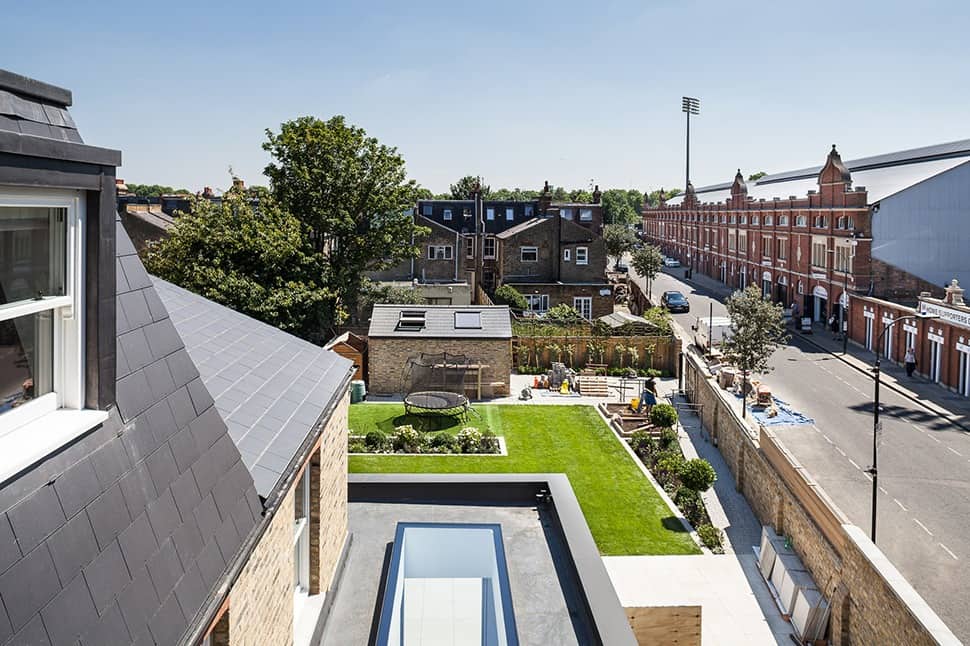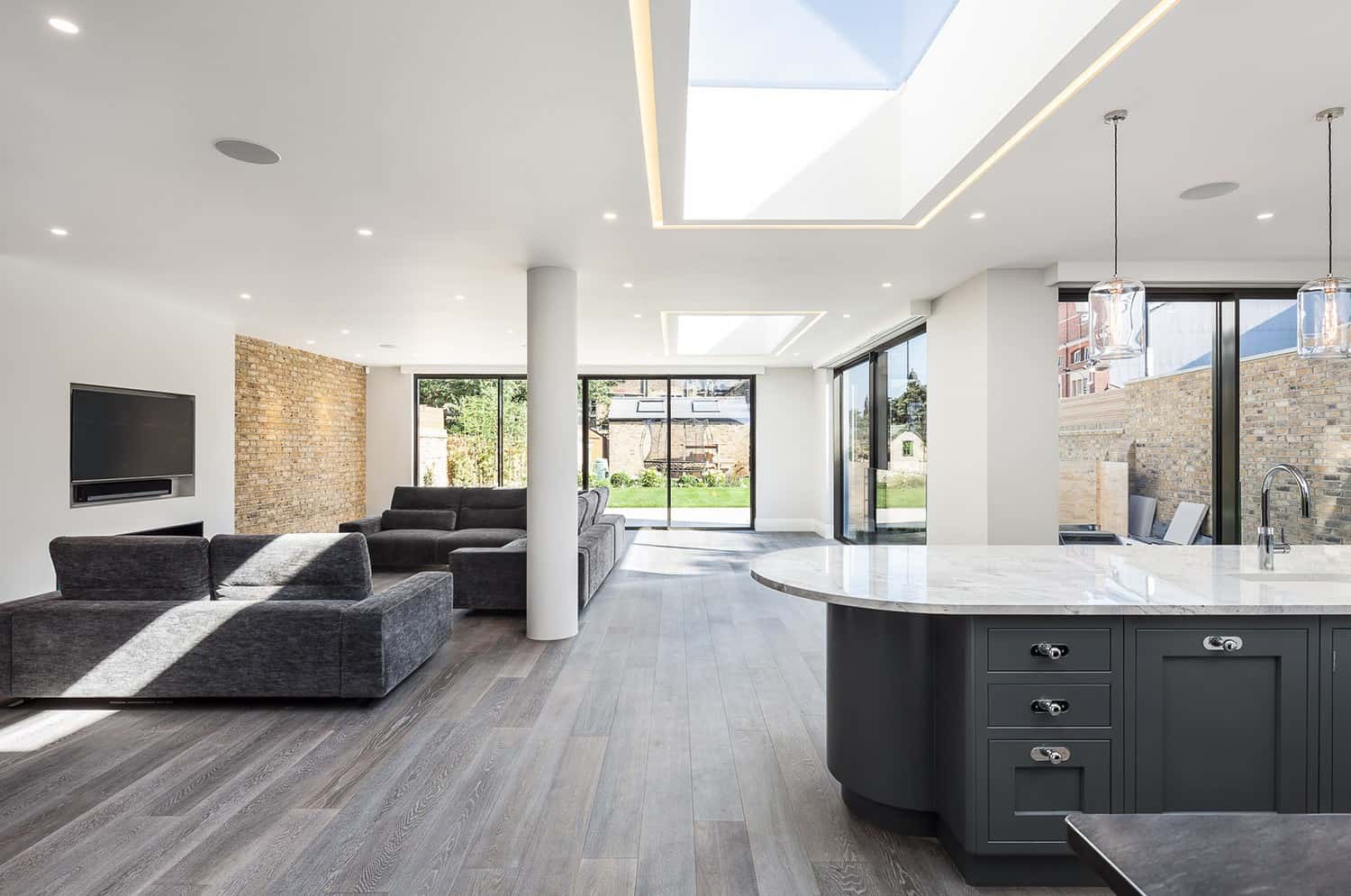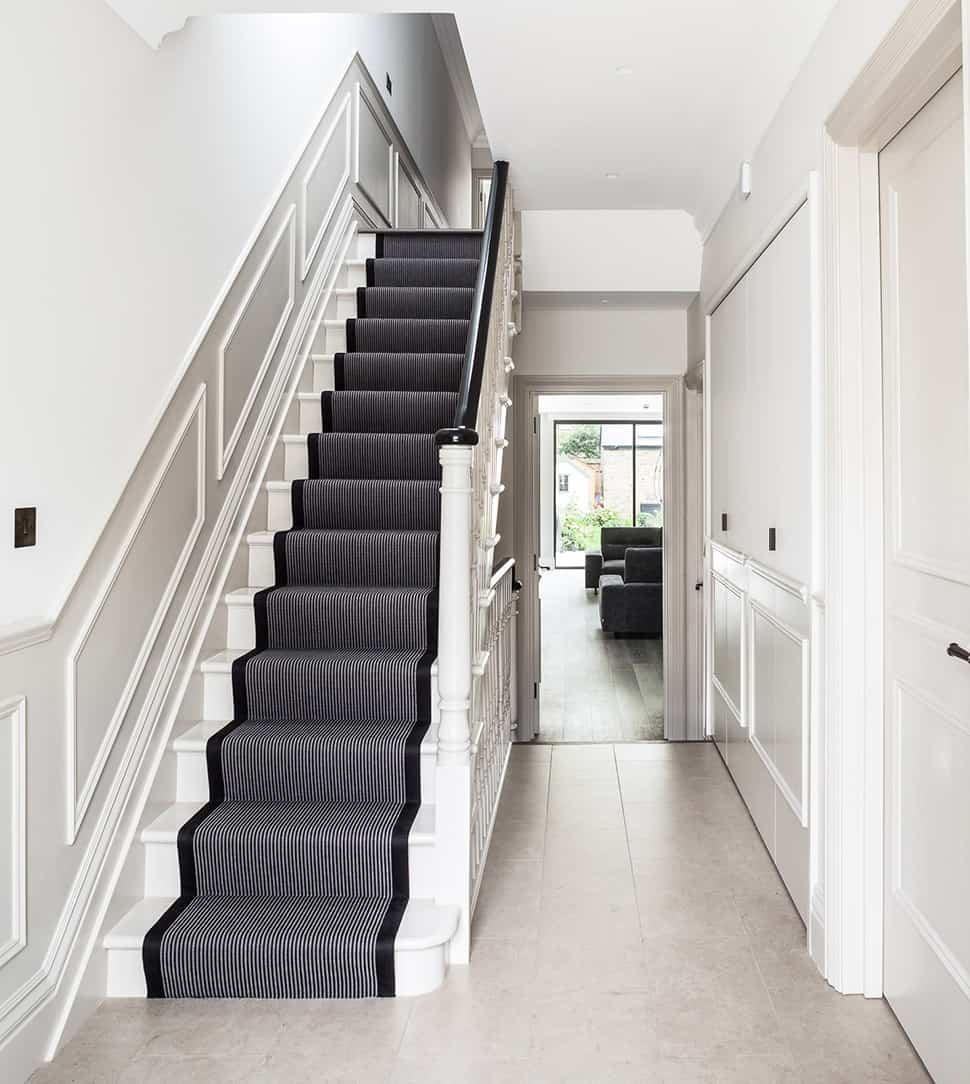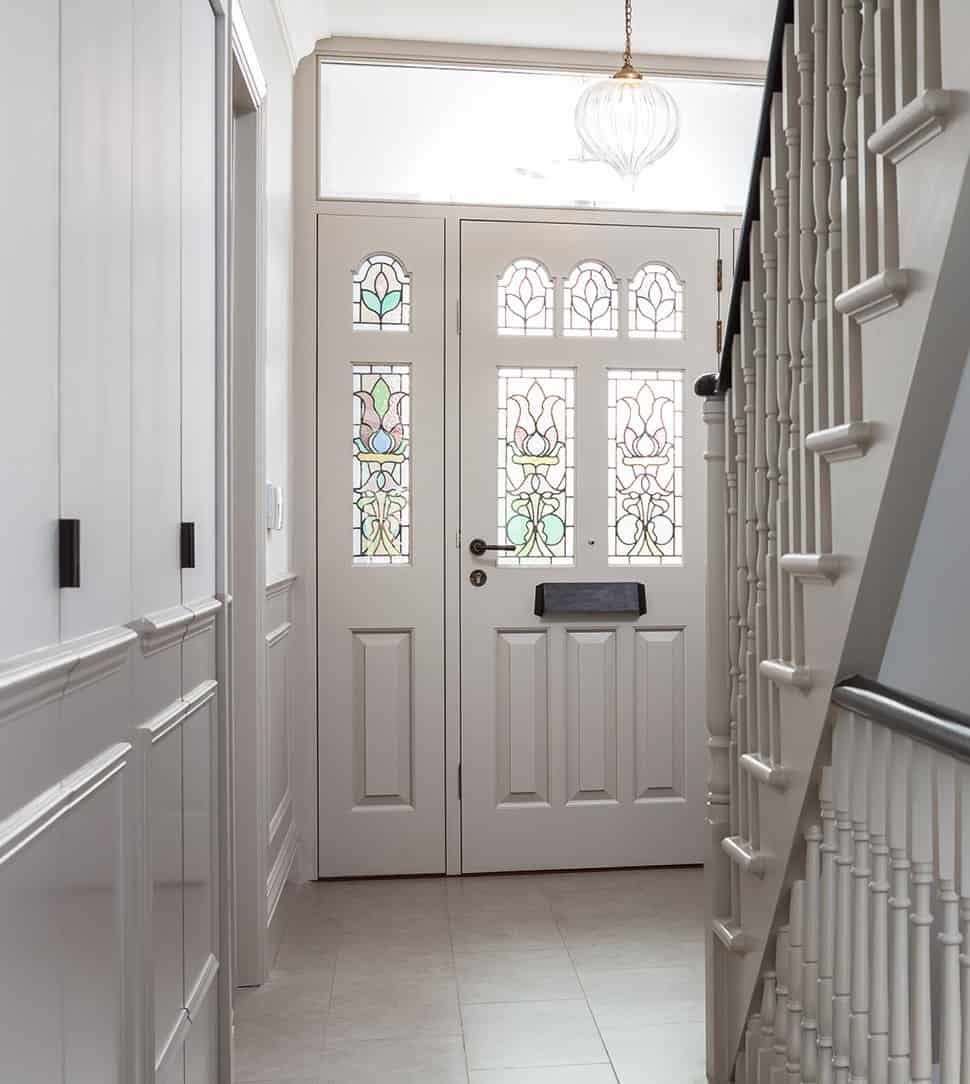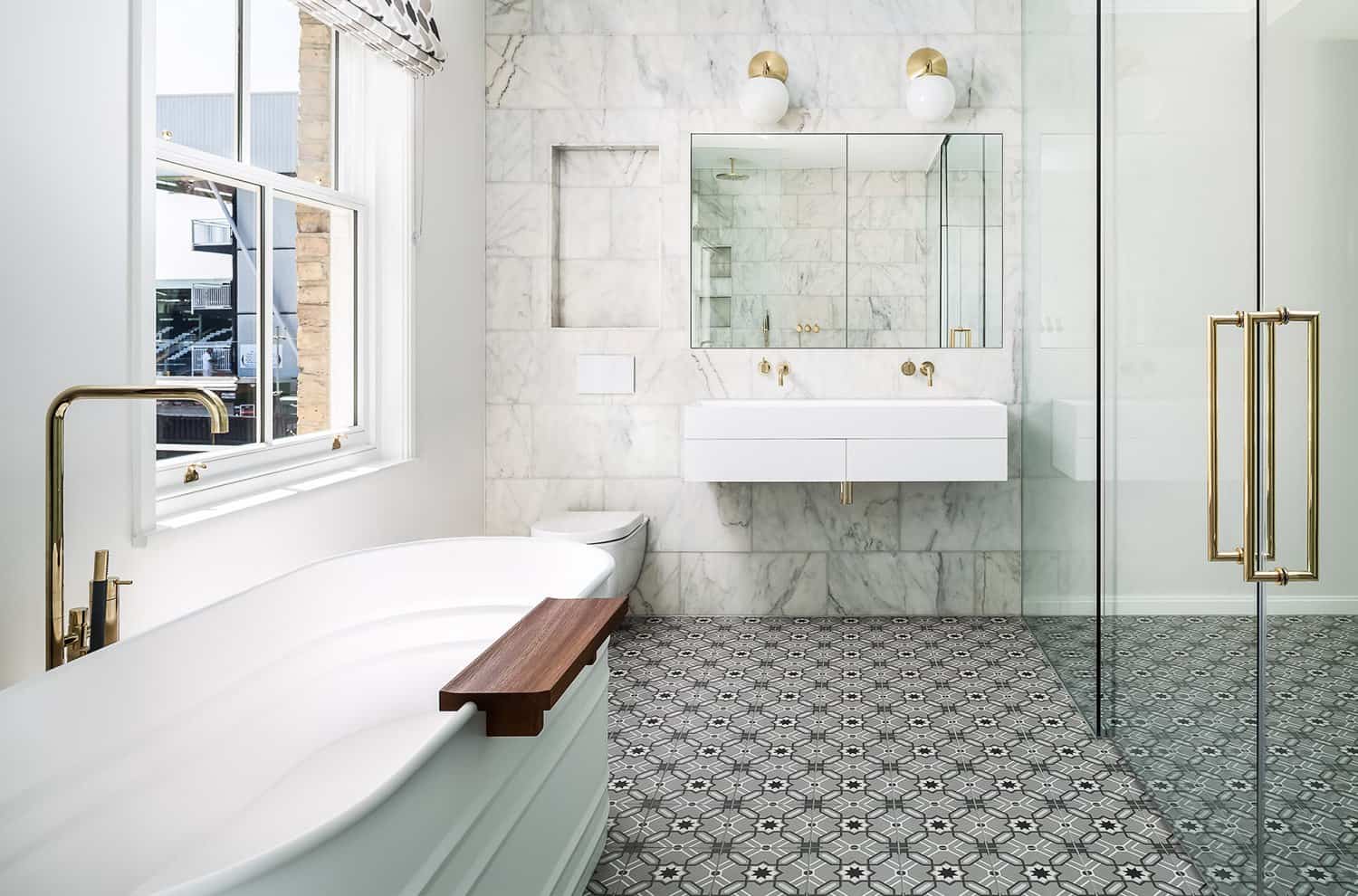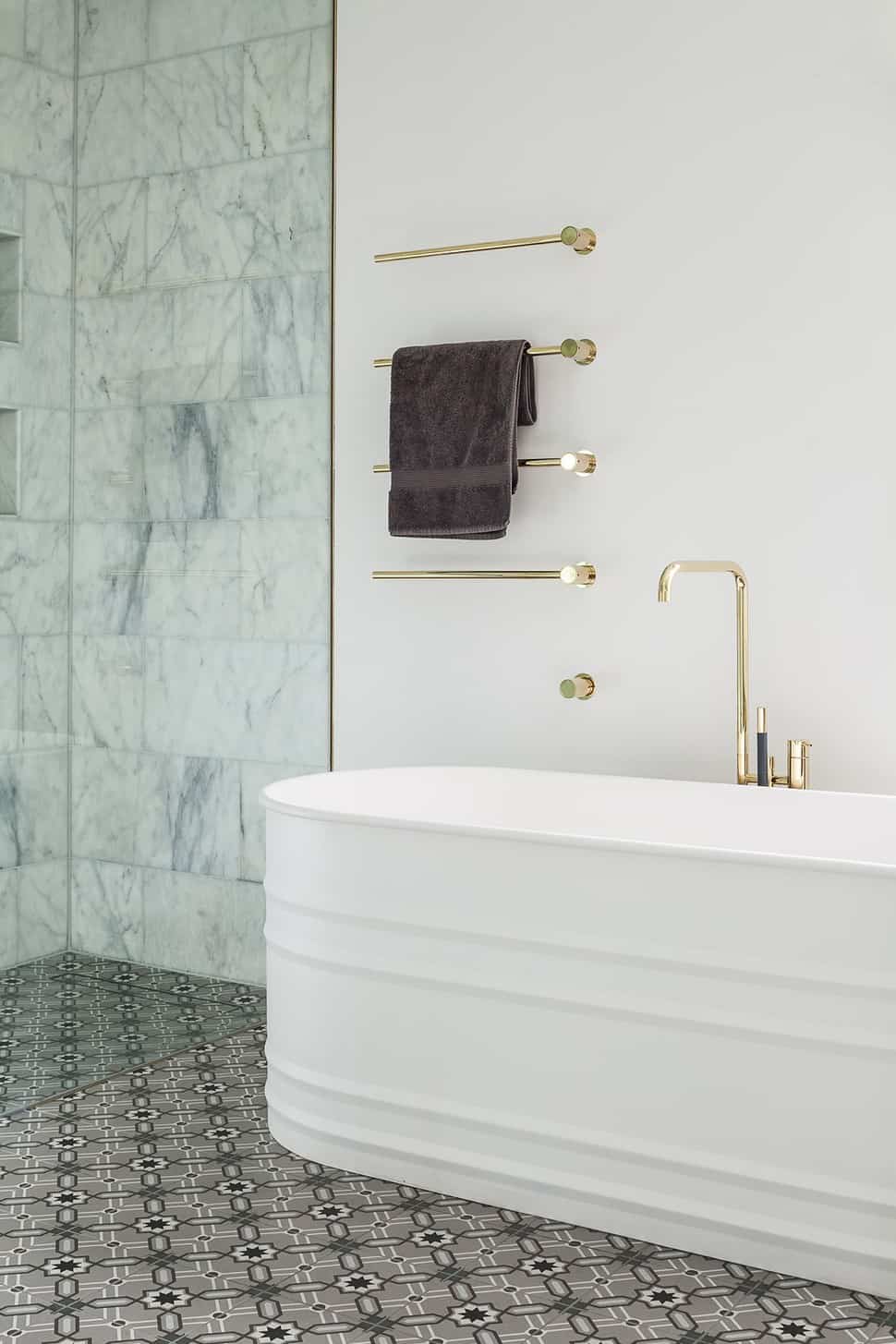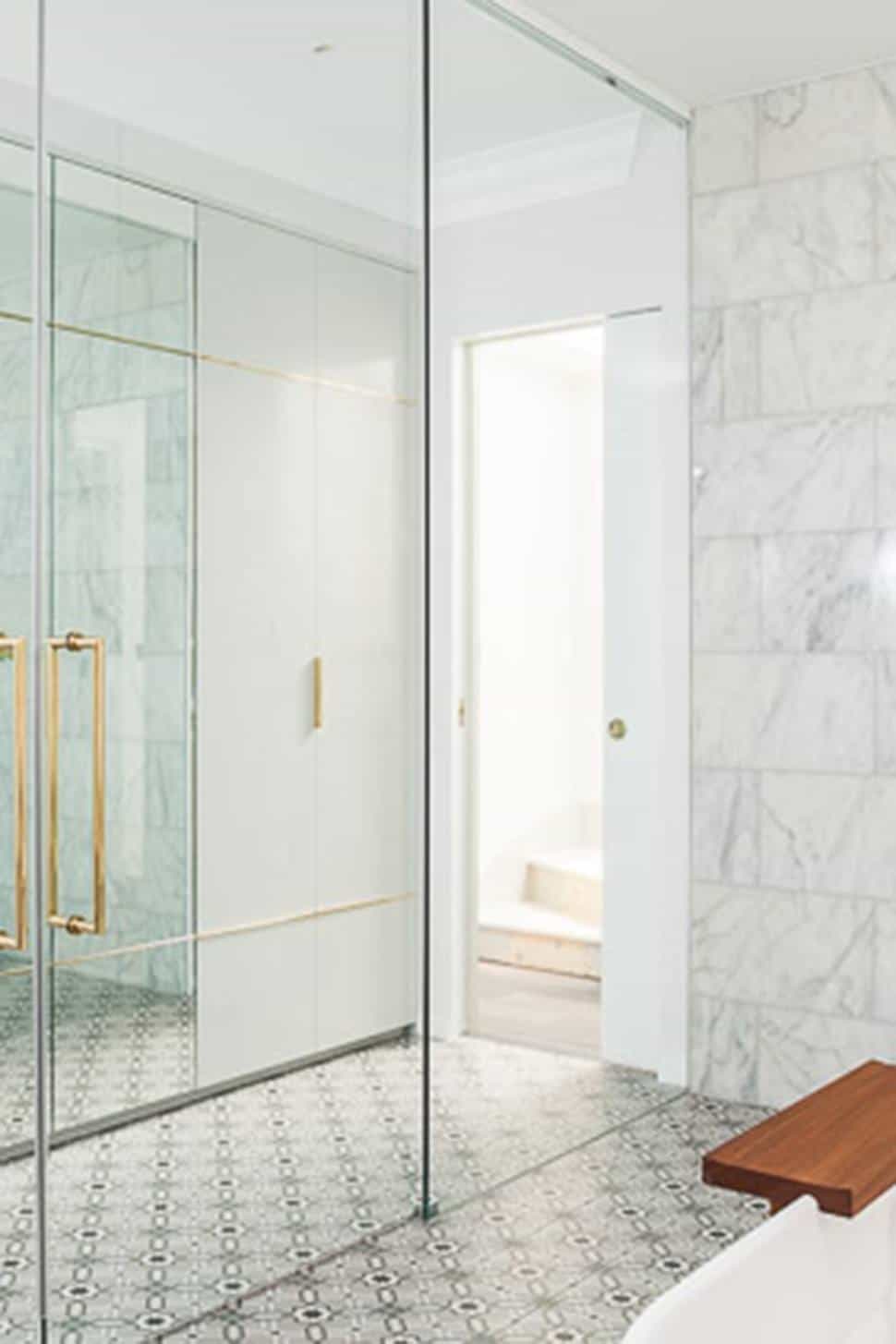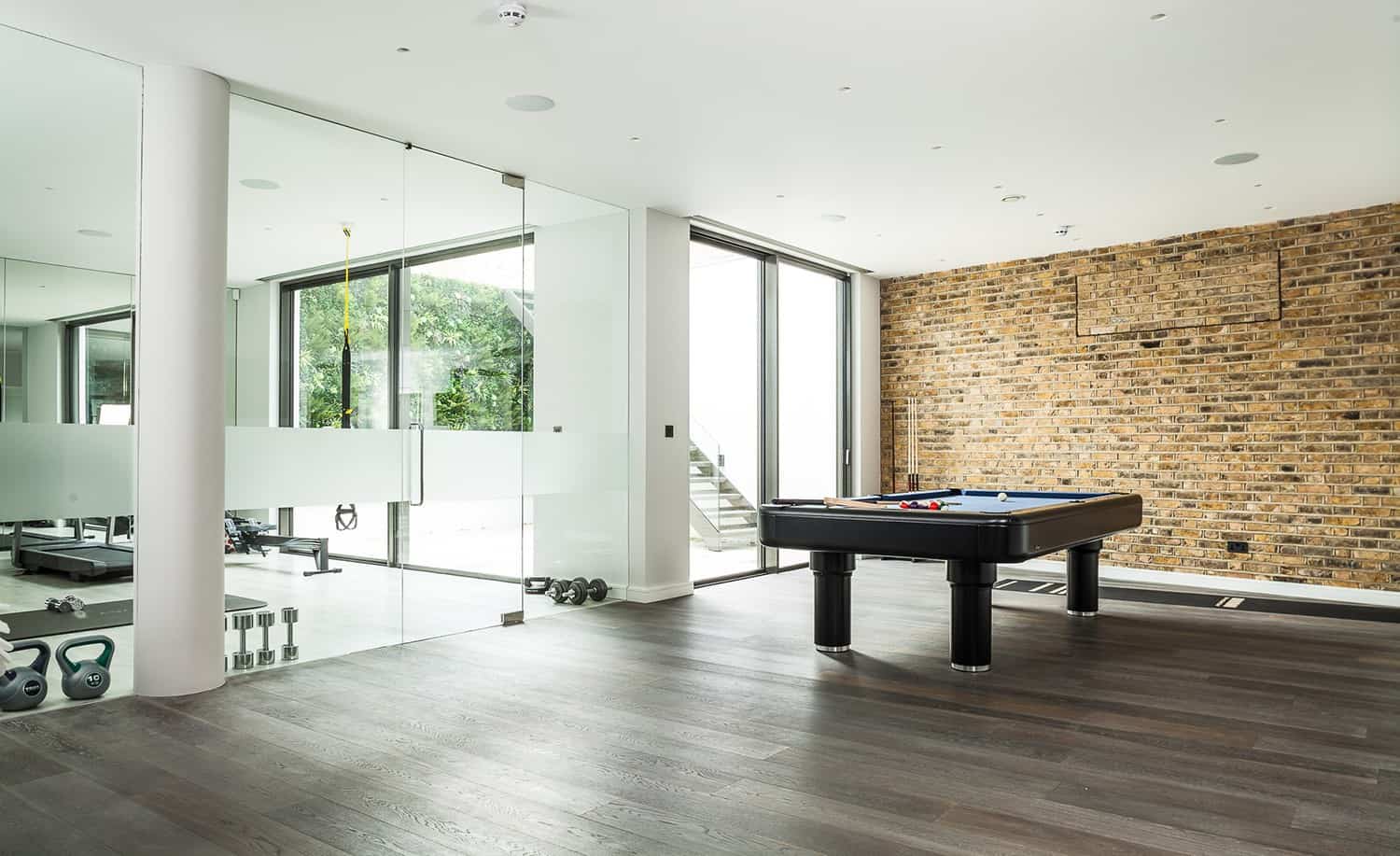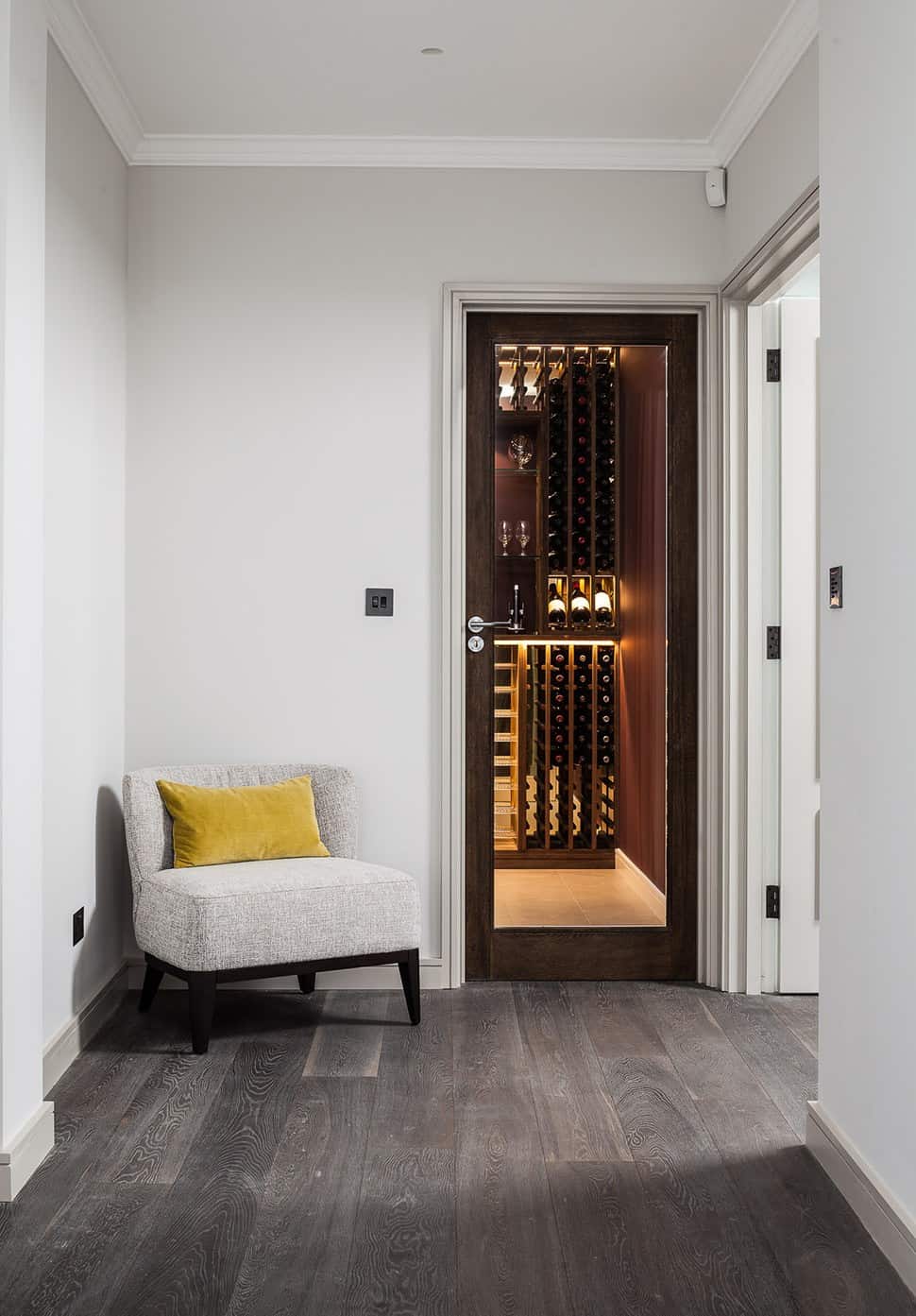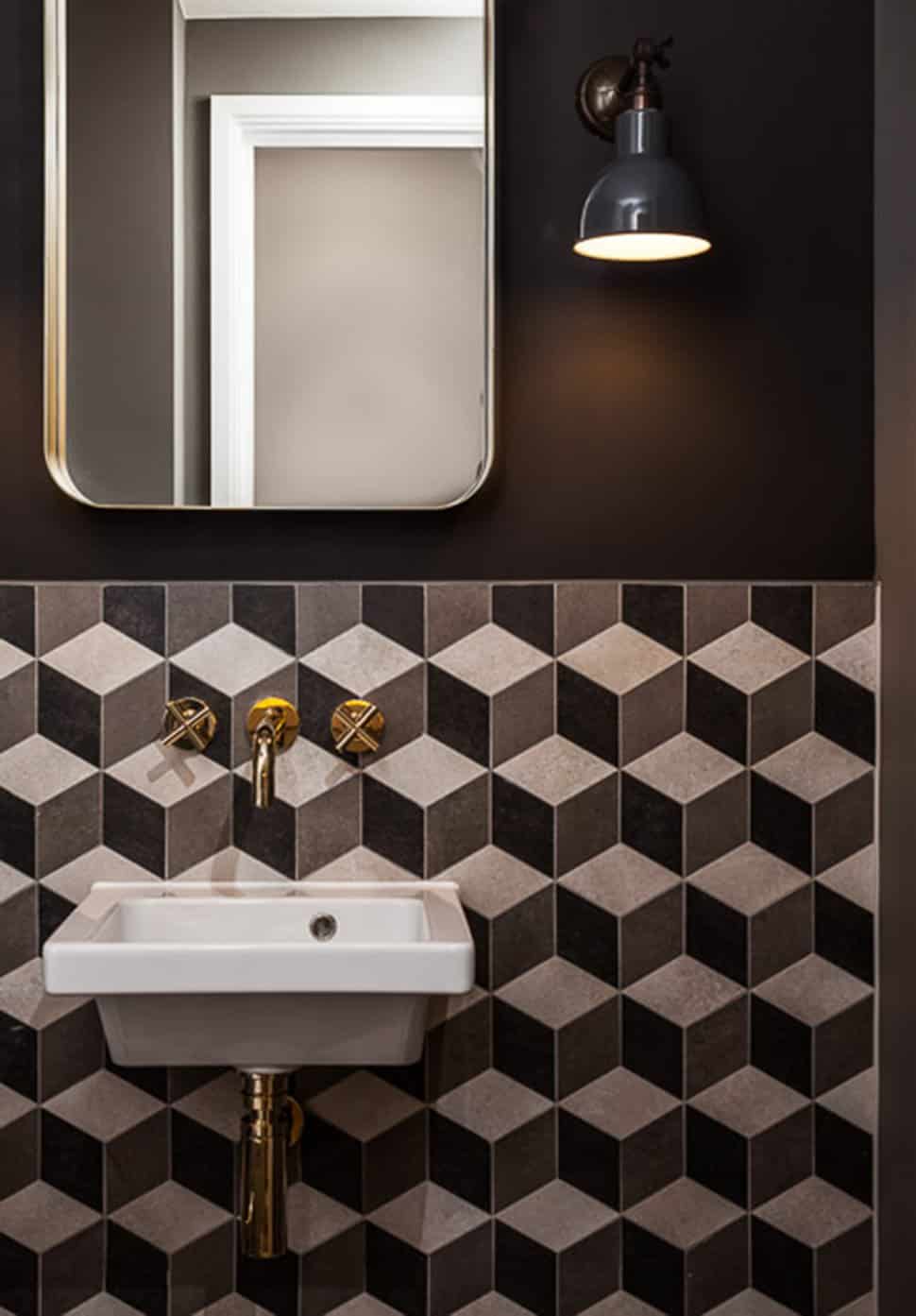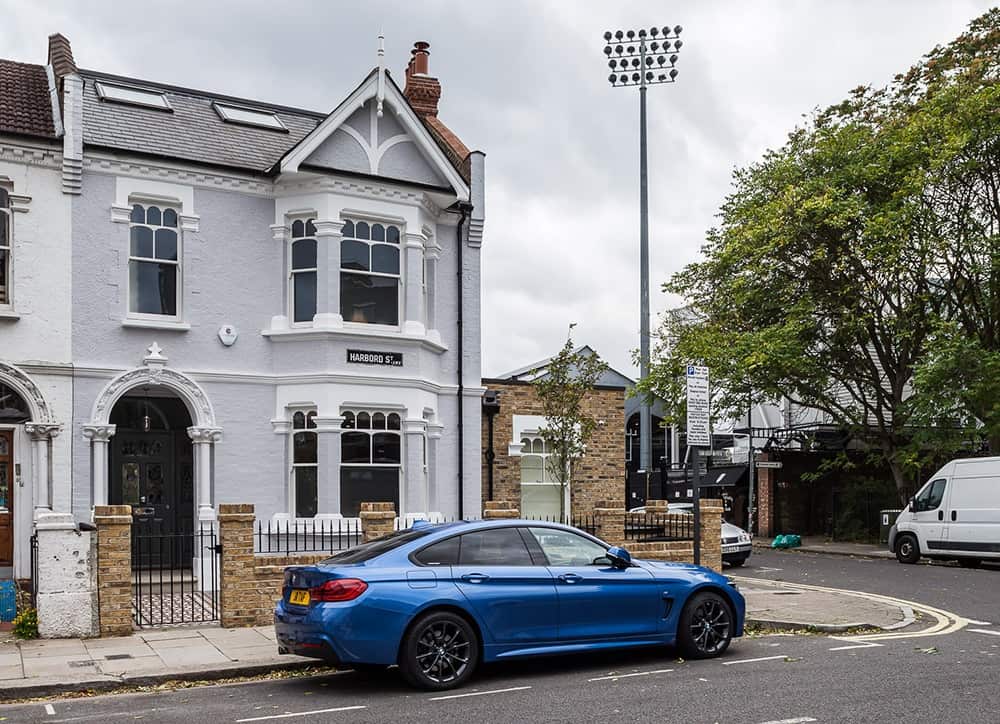We completely filled the space between the house and eastern boundary of the garden, turning what was once a garden wall into the exterior wall of the ground floor. Matching this vast new extended space is a full plan basement below, resulting in an increase in floor space of more than 100%.
The floor plan is not unlike a slice of an Incan pyramid, with each floor above ground smaller than the one below, from the vastly extended first floor up to the two bedrooms nestled in the roof. This tapering design allows us to build as large as possible where the house can’t be seen from the street while maintaining a low profile on the floors that are visible.
While the extensions provided a transformational increase in interior space, they inevitably encroached on the garden, which is one of the property’s best features. However, by removing its two large trees and replacing them with smaller, more attractive trees and plants, we were able to make the garden feel larger than before despite its reduction in size.
Removing trees is never taken lightly, but with the advice of an arboricultural consultant we were able to gain permission for the garden trees to be removed as they were diseased and we would be compensating with the new planting at the rear of the garden and a more diverse range of plant life within.
The standout feature is one of the largest light wells we’ve ever constructed: an almost 20 square metre space which doubles as a secluded courtyard. Light-wells are often hidden away but in this case we’ve made it a statement, decorating it with greenery and lining the surrounding basement and first floor walls with matching, floor-to ceiling glass sliding doors.
A steel stairwell with a glass balustrade leads up from this courtyard lightwell up to the new timber terrace and garden (which is still a generous space, despite the extensions). Follow the path from the stairs and you reach the new garage at the southern end of the site, hidden from the rest of the house by new planting.

